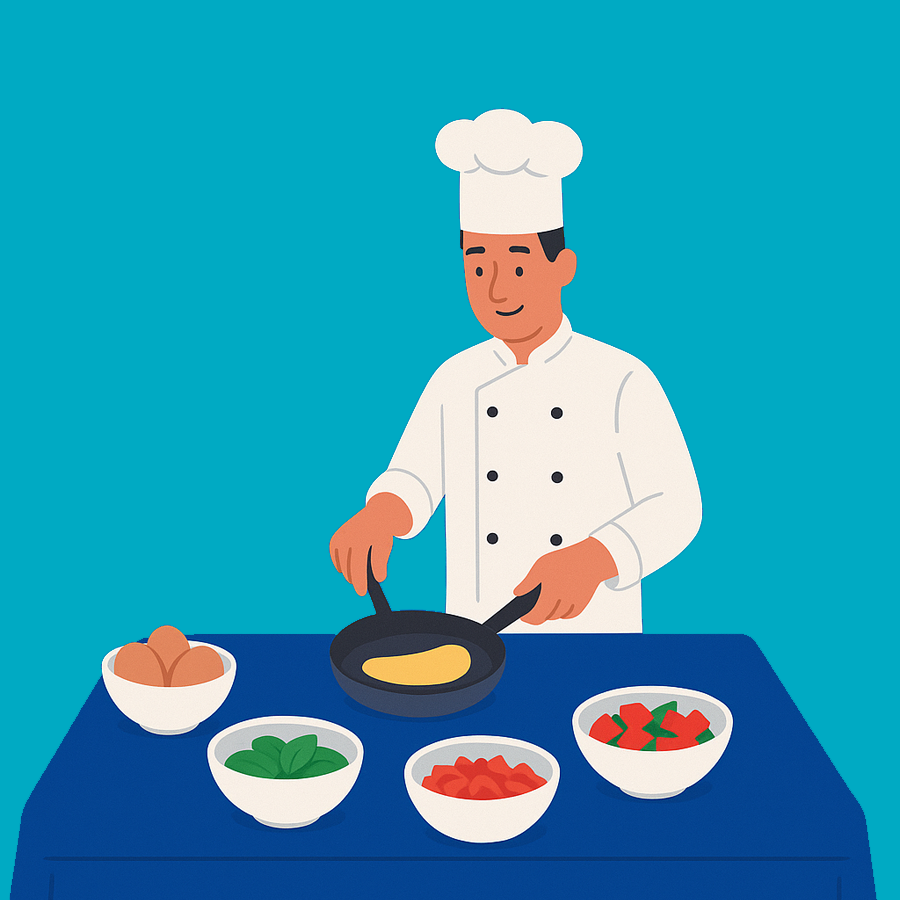From made-to-order pasta bars to chef-led carving stations and build-your-own taco setups, interactive catering has become a sought-after format across weddings, corporate events, and social gatherings. Guests love the personalized touch, the spectacle, and the chance to engage with their meal in a new way.
But behind the scenes, interactive setups require a different level of coordination. With live prep, custom menus, and guest movement to consider, they demand more from your team than traditional plated or buffet-style service.
This post breaks down how to prep and execute interactive catering experiences without losing your mind — or missing the mark.
Why Interactive Catering Is So Popular (and So Complicated)
Interactive food formats add major value:
● Guests participate in building or customizing their meals
● Food becomes a visual and sensory focal point
● Stations naturally spark conversation and movement
But with those benefits come real challenges:
● More moving parts = more risk of miscommunication
● Live stations require skilled staff and detailed timing
● Custom menus can get tricky without structure
These events look effortless to the guest — but they require a serious behind-the-scenes game plan.
Five Planning Tips for Smooth Execution
1. Start with a Structured but Flexible Menu
Interactive doesn’t have to mean chaotic. Offer limited, curated options that guests can customize without overwhelming your kitchen.
● Use clear modifier categories (protein, toppings, sauces)
● Plan for dietary variations (vegan, gluten-free, allergen-safe)
● Offer printable or visual signage at each station
Pro tip: Pre-label ingredients or build guest cards if needed for high-volume events.
2. Map the Flow — and Then Map It Again
Station layout and traffic flow are everything.
● Avoid bottlenecks at entrances, bars, or narrow aisles
● Place popular stations across the room to balance movement
● Stagger open times for different stations to reduce rushes
A simple floorplan sketch or layout tool can help you visualize spacing and circulation well before setup begins.
3. Build Separate Prep Sheets for Each Station
Interactive events mean each station may have its own ingredients, tools, and timing.
Create detailed prep sheets that include:
● Ingredient breakdowns by station
● Setup time and service windows
● Equipment and serviceware checklists
● Backup portions or contingency plans
Whether you’re using spreadsheets, templates, or an event management tool, this helps every team member stay focused and clear.
4. Staff According to Skill and Station Type
Not every station needs the same level of staffing.
● Live-cooking stations need trained chefs or confident cooks
● DIY setups may need floaters to restock or guide guests
● Consider assigning “station leads” for large or multi-room events
Always overestimate your staffing needs slightly — interactive setups are guest-facing, and visible hiccups hurt the experience.
5. Make Communication Part of the Plan
Last-minute changes are common: menu tweaks, guest count shifts, or vendor adjustments.
Build in systems for:
● Team briefings and station walk-throughs
● Printed or mobile-ready layouts and timelines
● Designated point people for each station or zone
Whether you’re using old-school clipboards or a full-scale software platform, the key is keeping everyone in sync.
What Tools Can Help?
You don’t need fancy tech to pull off a great event — but the right tools can reduce stress and improve results.
● Menu builders and prep sheet templates help streamline kitchen and front-of-house coordination.
● Scheduling tools (even simple ones) ensure the right people are in the right place at the right time.
● Room layout software like Placez or similar platforms can help visualize station placement before setup.
● Event management platforms like Caterease can help centralize details if you’re juggling multiple events or proposals.
Final Thoughts
Interactive catering experiences are high-impact — and high-effort. They create memorable moments for your guests, but only if they’re backed by solid planning.
Focus on clarity over complexity, anticipate what can go wrong, and use smart systems to stay ahead. Whether you’re working with a team of two or twenty, prepping interactive stations becomes a whole lot easier when you plan with purpose.
If you’re looking to scale your events while keeping that custom, guest-focused feel, organizing your process is the first step — and it pays off at every station.
FAQ: Interactive Catering Execution
Q: What is interactive catering?
Interactive catering includes food stations where guests participate — like build-your-own bars, chef demos, or live cooking setups.
Q: Are these harder to plan than traditional catering?
Yes — they involve more logistics, staffing, and prep coordination. But with good planning systems in place, they’re manageable and rewarding.
Q: Do I need special software to manage these events?
Not necessarily — but using tools like layout planners, task trackers, or catering software can make things smoother and more scalable.
Q: How do I avoid bottlenecks at food stations?
Use smart layout design, stagger station timing, and make sure each zone has room for guests to queue and move without blocking others.

